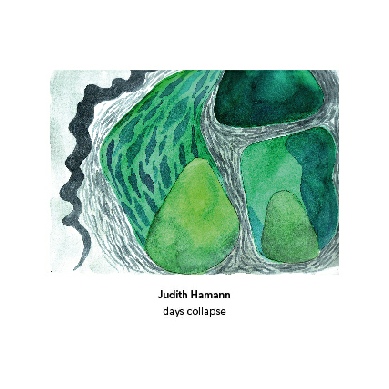Another Timbre TimHarrisonbre
at165 Judith Hamann - ‘days collapse’
Beautiful music for cello and electronics produced by Judith Hamann while in lockdown on the island of Suomenlinna in Finland. One of Another Timbre’s quarantine commissions, ‘days collapse’ is a suite of four pieces with a quiet, brooding intensity.
Judith Hamann’s residency was part of the Helsinki International Artist Programme, and was supported by the Australia Council for the Arts. The editing was completed with funding from the Creative Victoria Sustaining Creative Workers Program.
1. days collapse days 18:28
2. as with covering wings 11:34
3. become shut, draw together 7:31
4. collapse night 11:18
CD copies sold out, but downloads still available from our Bandcamp page here
Interview with Judith Hamann
Tell us about the 'days collapse' project: how did it come about, and where did you record it?
This project began in the early stages of Europe and most of the world really shutting down due to COVID. About a week before all the borders closed, I had somewhat miraculously arrived on the island of Suomenlinna, off the coast of Finland near Helsinki, to undertake a three-month long artist in residence project. Jon Abbey began an online festival called AMPLIFY 2020: Quarantine in March, co-curated with Vanessa Rosetto and Mathew Revert, and they were lovely enough to ask me to make something for it.
At that stage, with my life being cancelled one email at a time, and grieving the death of a really close friend Sean Baxter from back home in Australia, I had this sense of time and life structures buckling, compressing and dilating simultaneously, of a sense of temporal and spatial collapse that was in this strange way, shared, as well as being distinctly individual. The work I had intended to do at this residency was completely derailed by border closures and travel bans, by social distancing and lockdown, and like everyone, I was in a major period of recalibration. I was struggling to feel like playing the cello for the first time ever in my life, I think because of Sean's death, and so I spent an afternoon modulating feedback with a washing basket and humming and that formed the sort of spine of what is now the last piece on the album, which appeared as a different version for AMPLIFY, a piece titled ‘Days Collapse Days Collapse Night.’ The next day it was incredibly windy, and I added some recordings of me drawing which was one of the ways I managed my mental and creative health during that time, and that also established the sort of palette of the work: "a day collapsed into a day."
You were then kind enough to suggest that I develop and expand that piece into an album length project for Another Timbre, and I'm so grateful that happened because it became something really vital to me during those three months. As the island changed, the weather shifted and the days grew from short and very dark to impossibly long and bright, these pieces formed around an improvised skeleton of feedback, embellished and embroidered by the weather, geese, psithurism, and these very large frottage drawings I began making, which were another kind of manifestation of similar ideas, of recording collapse, of impossible landscapes. This album feels as if it were made in collaboration with the island, with my studio itself being a kind of porous capsule/capture space. The permeability of the space itself brought the island into the record, whether I wanted it to be there or not, so it felt as if listening to it, and allowing it to be its own actor, the island and all its inhabitants having their own voice shaped the whole piece.
Since I started the project I have been thinking a lot more about collapse as an idea, and it’s become a really important means of thinking with and through certain ideas and experiences. Collapse in the sense of this album refers most immediately to a temporal, spatial sense of the word, to a buckling of structure, of multiple layers suddenly without division. This sense of collapse points to the sort of overall experience of redrawing of inside/outside/public/private/social spaces/and perception of time in response to the COVID-19 pandemic.
Perhaps I’m being overly utopian here, but I now think collapse is not synonymous with disaster, it can instead be generative, creative, a way of making a new story or experience, a way of revealing, or retelling our perception of the world. Collapse enables us to create and imagine new modes of living and working, new economies, new relationships, it kneecaps the formal structure of hierarchical chains, it levels, and creates lateral means of relating across social and artistic structures which can no longer be stacked. Collapse can be messy, it rethinks spaces, objects, and beings as porous, entangled, as infra-acting, in the sense of Karen Barad’s use of the term. Within this entanglement, dialogues and new forms may emerge: from different kinds of metaphorical levelling, liquidification, and modes of simultaneity.
I think, for example, that the shift in attention in terms of global awareness of racial justice, white supremacy, abolition, to imagine different ways of being on this really large shared scale, this is maybe more possible right now because we are functioning from within a space of collapse, where things which people thought were impossible are becoming things we can really see, or at least collectively imagine. I think that when I started this project I was definitely in a space occupied with my personal sense of things crumbling around me, and now I view collapse itself with more optimism, I think that worked its way into the music too, all these palimpsests of aperture, time, possibility, grief and wonder rubbing shoulders with each other in a sort of speculative, imaginary, sonic space.
That’s fascinating. Now that residency has ended, and we seem to be entering a second wave of C-19, and the possibility of another period of lockdown, have you retained that sense of possibilities opening? Where are you currently working and what is your situation now?
While I entertained various fantasies for some time about staying on the island forever and becoming a sort of island troll woman, learning to become a mushroom whisperer and amateur bryologist, when the borders opened and it was time for me to leave I made a break for Berlin. I hadn’t really lived anywhere for a few years, but by June, my most ‘home’ like places, (Victoria “Australia”, or southern California in the USA) were no longer reachable and this seemed the most sensible course of action. I feel incredibly lucky, still marvelling really, at the good fortune I have had in terms of the places I found myself in during this pandemic. Things could have gone very differently for me if I’d been mid-tour without anywhere to stay for instance and we might not be having this conversation at all.
It was quite overwhelming arriving in Berlin after being alone for so long in Finland, and I think in many ways I’m still readjusting. I do still think that these tectonic shifts in the way we experience time and how we ‘do’ life open unexpected spaces and that there is so much possibility there, but it has also surprised me in some ways how quickly they get filled again, how quickly the world rushes in, in a place where things are much more ‘business as usual’ like here.
After only a few weeks in Berlin I started attending rehearsals for a festival of just intonation works by James Tenney and associates/students of his which will be presented by the ‘Harmonic Space Orchestra’ here in October. It was really a completely astonishing feeling playing music in a room with other people after so long alone, especially the ‘I-could-swim-around-in-this-forever’ magic of collective just tuned sonorities. However, it’s also the main thing consuming my time at the moment, and it’s been quite a while since I’ve had to manage practicing and rehearsing four concerts worth of notated music!
I’ve started (very slowly) working on some new recordings here, an attempt at transposing some of the conceptual and process-based ideas that developed over the course of making the ‘days collapse’ work into my current living space. This of course is completely different material, but I suppose this means I am still thinking with the notion of collapse as an approach to making recorded music here as well.
Do you have a home or permanent base, or is your musical life essentially nomadic – and if so, how does this affect the music you make?
This is the first time after a long period of nomadic living I have a place to live, but I’m still feeling vaguely suspicious about the whole notion of ‘home.’ I am trying to do things to make myself feel more like it might be, like preserving lemons for instance, but it doesn’t feel completely real yet.
I am really missing having the time to make my own work right now, but I imagine that time is fast coming as winter creeps closer and numbers continue to go up. I know it’s a ridiculous thing to say, especially since so many people I love are currently struggling in their respective lockdown situations, but in some ways I would almost welcome another period of lockdown. I seem to have become much more in need of solitude after my time on the island. Too much time out of the little apartment I am currently living in (which is still almost completely lacking in furniture, while the pile of books keeps suspiciously growing…), or with people, makes me long for alone time at home, it becomes almost like a physical need, something akin to being desperately thirsty. I have realised that I need a lot of time *around* the making of my work. The work itself often crystallises fairly quickly when it’s right, but I need so many secret hours of dead-ends, abandoned ideas and processes, failures, practice routines, long walks etc. to get there.
This is all fairly amusing to me on several levels, this change, since before the pandemic I had no intention of settling anywhere at all. I haven’t had any sense of ‘home’, any stable work or even personal space for quite some time. Before this year it was very difficult for me to do any of my own work at all, only possible in snatches of residency time in between other things, but I don’t think I could ever go back to that way of doing things now. The particular species of traveling and wild instability of how-I-once-lived is not sustainable environmentally, physically, or emotionally. So I suppose part of what’s happening for me now is trying to figure out how to make my life less precarious, which involves plenty of joking about retraining as a locksmith but I don’t think it’s that ridiculous an idea!
It’s interesting observing myself over this year, and how I’ve changed. Sometimes I think I’ve become a bit strange, but I think perhaps all of us have in some way? We’re out of practice with each other, I’ve forgotten how to be in large formations of people, how to talk to each other without blundering, without being either too much or too little.
Tell us a bit about your background and how you came to experimental music.
I grew up in Naarm/Melbourne and I suppose I came to experimental music slowly and late via multiple directions in a way. I started learning the cello when I was around 12, but played other instruments before that. The cello was something I just completely fell for, like a complete infatuation, totally in love. However experimental music came through different channels, through playing in bands and listening to weirder and weirder bands who then mentioned artists and musicians which were part of the larger ecosystem of experimental music. I had a really turbulent unstable teenage life and didn’t manage to muster the courage or stability to study music properly until a bit later on, but then I was so lucky because my friends and collaborators were the most magical collection of brilliant musicians and weirdos and I still work with so many of them today, including my trio Golden Fur (with Samuel Dunscombe and James Rushford).
We were also incredibly lucky to be supported and shown things and educated by people in our community with encyclopaedic knowledge, or embodied knowledge, or just completely passionate about experimental music, like Sean Baxter, Annalee Koernig, Oren Ambarchi, Anthony Pateras, Carolyn Connors, Donna Coleman, and so so many brilliant people. I didn’t have a computer or the internet in any accessible way until I was 24 years old, so I really depended completely on libraries and friends for my 'education'. The whole experimental music community that I grew up in as an artist was beyond generous, and I feel incredibly lucky to be part of this family. I learned so much by being in a community, I think it’s such a beautiful way to learn about things you love.
At some point, James loaned me the Tzadik recording of Patterns in a Chromatic Field by Morton Feldman, performed by Charles Curtis and Aleck Karis, and that piece became this strange guiding thread through my life for around a decade, bringing me via a series of twists and turns to San Diego where I then studied with Charles for several years. I learned so much in that time, and a lot of it wasn’t about music necessarily, but about community and human beings and thinking and writing and food and sound and borders and what kind of work I wanted to make and what kind of practice matters to me.
I think I kind of reckoned with a sort of circling around at a certain point in terms of what experimental music means to me, the broader experimental music ecosystem is made up of so many different backgrounds and pedagogies and approaches, that spans from the heavily institutionalised to DIY. I was at an institution, UC San Diego, that positions itself as being an “experimental music school”, which at the same time was largely oblivious to the richness of the experimental scene operating on fumes and mutual aid across and around the US/Mexican border just a few miles south. I’m not sure really what experimental music means as a term these days except that I do like that it can be so many things in the same breath, that it can refer to so much simultaneously depending on context, that the term could refer to music as broad as Eliane Radigue, or Divide and Dissolve, or Eiko Ishibashi, or Sarah Hennies, or Tomeka Reid.
For me, I am relatively new to being brave enough to make my own things outside of my long term live performance practice, so I think I’m just trying to make things that might matter, even if it is mostly just to me. They are attempts to use sound and bodies to make spaces for imagining, and hopefully some of that translates. I think we are in a time where the spaces and interrelations we choose to imagine (or not) have a particular kind of potential, adumbrate where might go from here.
These are the original notes for the last piece on the CD:
“My ‘quarantine’ feels like many things collapsed on top of each other: collective and individual grief crashing into each other, various contractions and dilations of time on itself, the opaqueness of the future mixed up with the vague sense of paralysis of the present.
I haven’t been able to do much of what I perhaps *should* have been doing this last two weeks, instead I might find myself going for long windy walks, or spending the afternoon humming and modulating feedback with a washing basket (spoiler alert), or finding just practicing scales on cello incredibly comforting, or reading an unauthorised biography of Black Sabbath I found in the laundry room etc. I am trying to remember grief is weird and that all of this is ok.
One thing I have managed as a nearly daily exercise is doing and recording small sensorimotor drawings which are part of a larger project of accumulation. That all feels a little ‘but to what end?’ now, but I am still doing them. It’s nice to have something tactile to do which doesn’t have to be ‘good,’ or seen, or finished, it just has to be, a tiny demand of 10 or so minutes of labour and listening. This piece feels something akin to that perhaps.
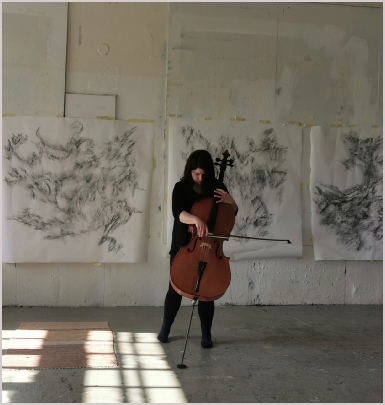
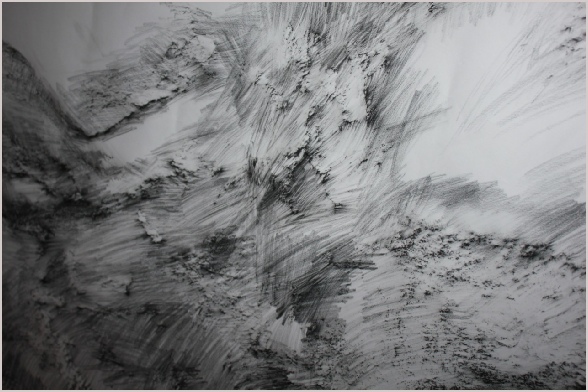
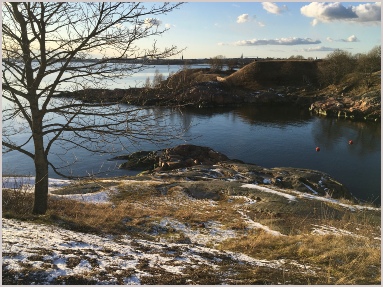
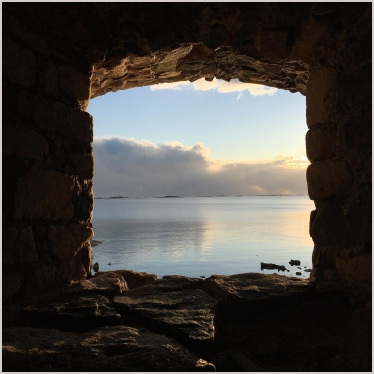
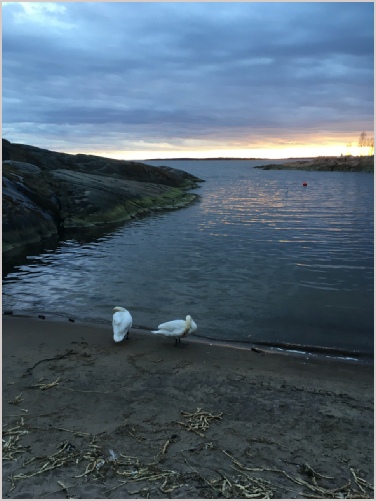

Judith Hamann
